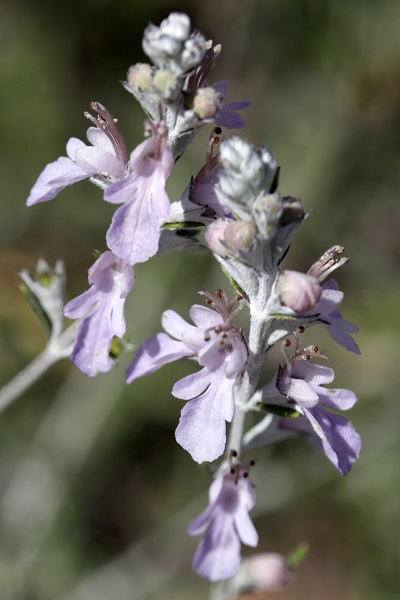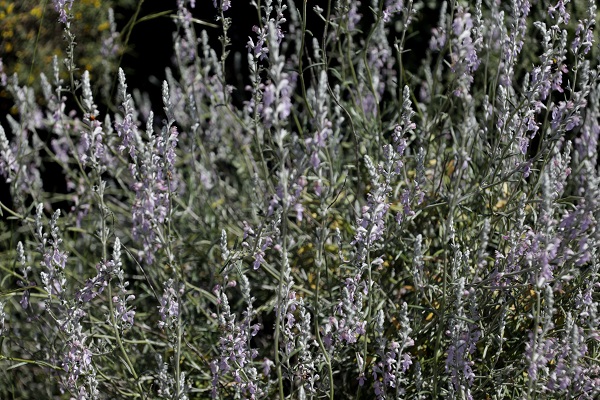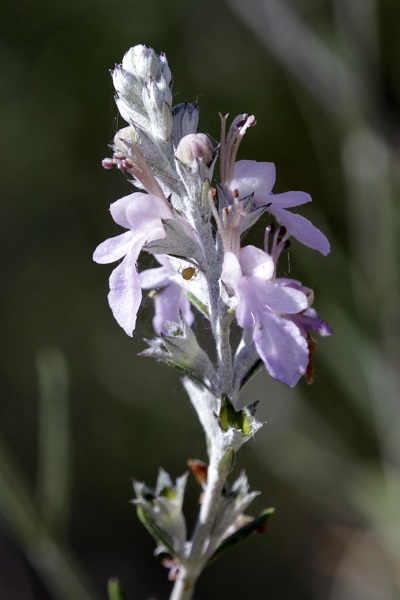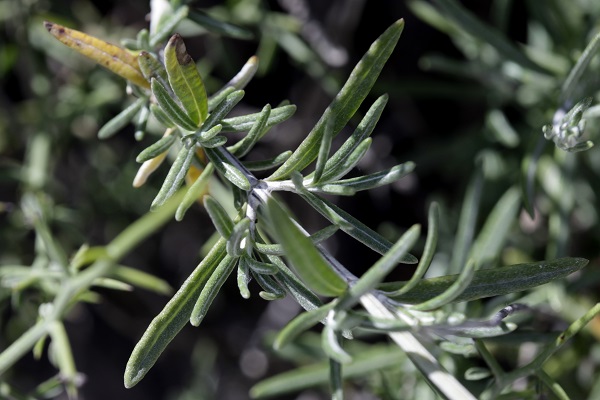Teucrium hyssopifolium, Teucrium rosmarinifolium, Cretan germander,
Hebrew: געדה כרתית, Arabic: الجعدة الكريتية
| Scientific name: | Teucrium creticum L. | |
| Synonym name: | Chamaedrys cretica (L.) Raf., Teucrium charamoniense Cav., Teucrium hyssopifolium Schreb., Teucrium rosmarinifolium Lam. | |
| Common name: | Cretan Germander | |
| Hebrew name: | געדה כרתית | |
| Arabic name: | الجعدة الكريتية | |
| Family: | Labiatae (Lamiaceae), Mint Family, משפחה שפתניים |

|
| Life form: | Evergreen dwarf shrub | |
| Spinescence: | no | |
| Succulence: | no | |
| Stems: | 4-angled, white-tomentose | |
| Leaves: | Opposite, lanceolate-linear, quite entire | |
| Inflorescence: | Flowers in raceme-like panicles | |
| Flowers: | Calyx shortly campanulate, white-tomentose outside, glabrous within; corolla 15-25mm, blue or lilac; stamens long-exserted | |
| Fruits / pods: | Nutlets | |
| Flowering Period: | May, June, July, August, September | |
| Habitat: | Batha, Phrygana | |
| Distribution: | Mediterranean Woodlands and Shrublands | |
| Chorotype: | Mediterranean | |
| Summer shedding: | Perennating |

Derivation of the botanical name: Teucrium, Greek teukrion, probably named for Teucer (Τεῦκρος, Teukros), the son of King Telamon of Salamis and his second wife Hesione, daughter of King Laomedon of Troy. He fought alongside his half-brother, Ajax, in the Trojan War and is the legendary founder of the city Salamis on Cyprus. creticum, from Crete. The Hebrew name: געדה, ga'ada, New Hebrew; from Arabic: ja'ada.


|